61+ Sample Training Checklists
-
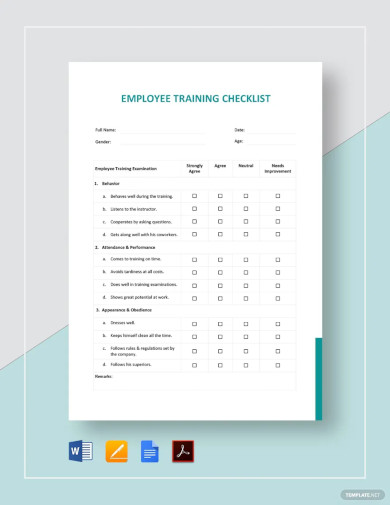
Employee Training Checklist Template
download now -
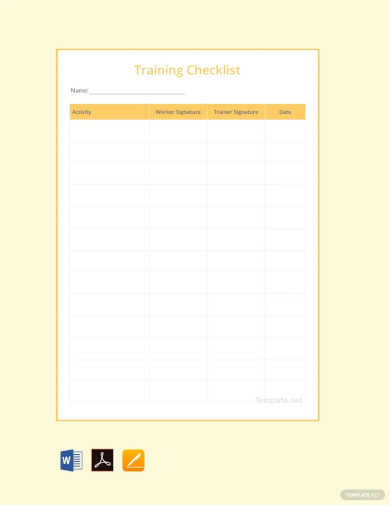
Professional Training Checklist Template
download now -
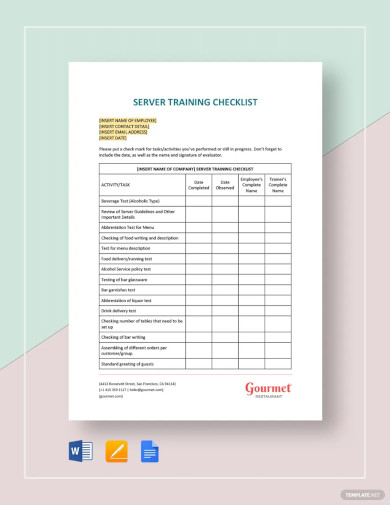
Server Training Checklist Template
download now -

New Hire Training Checklist Template
download now -
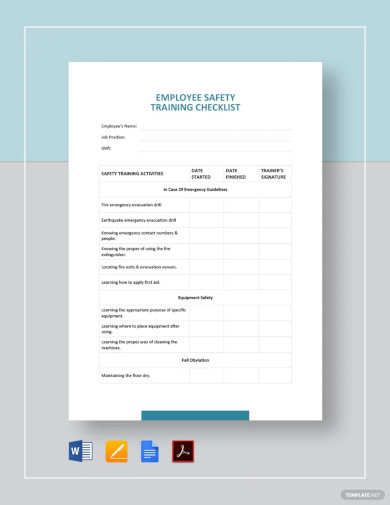
Employee Safety Training Checklist Template
download now -
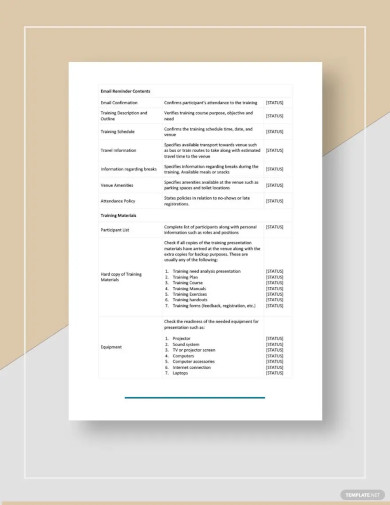
Training Checklist Template
download now -
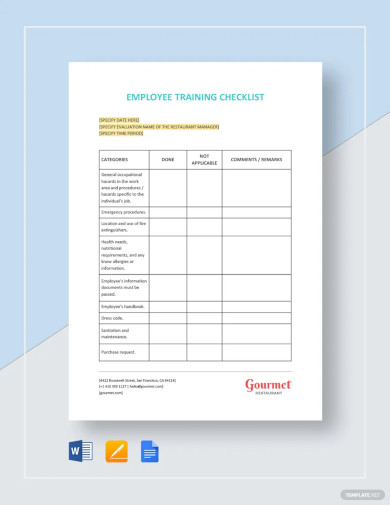
Restaurant Employee Training Checklist Template
download now -
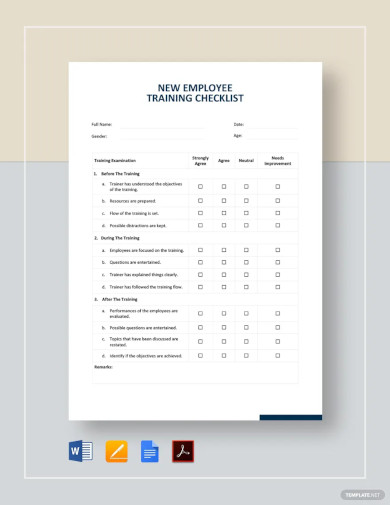
New Employee Training Checklist Template
download now -
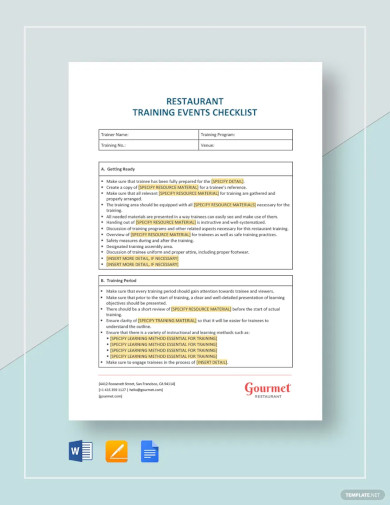
Free Restaurant Training Event Checklist Template
download now -
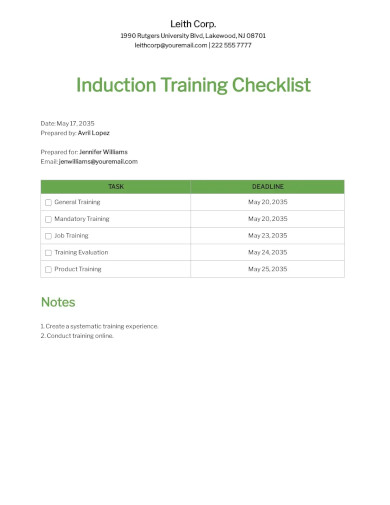
Induction Training Checklist Template
download now -
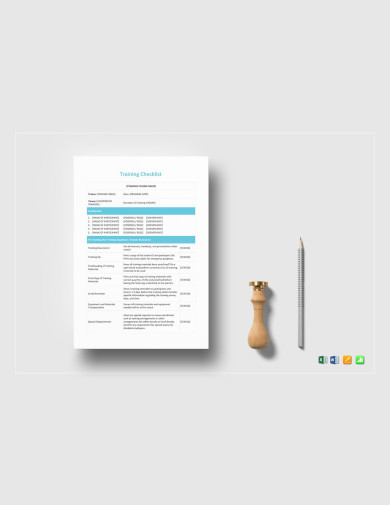
Simple Training Checklist Template
download now -
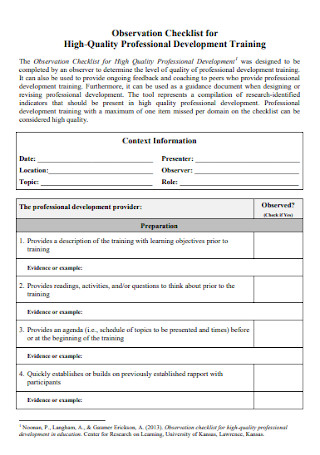
Training Observation Checklist
download now -
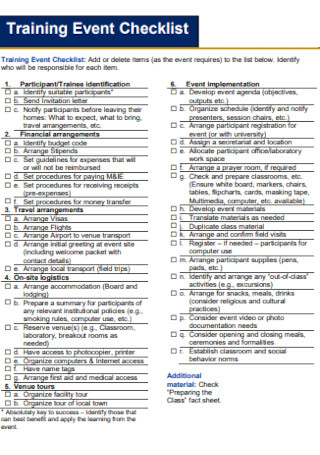
Training Event Checklist
download now -
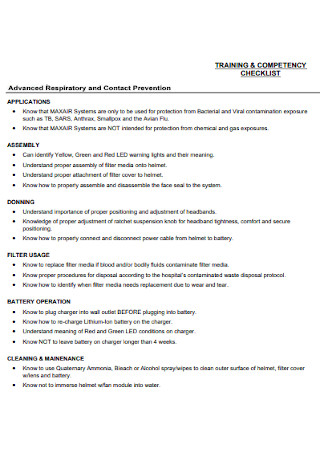
Training and Competency Checklist
download now -
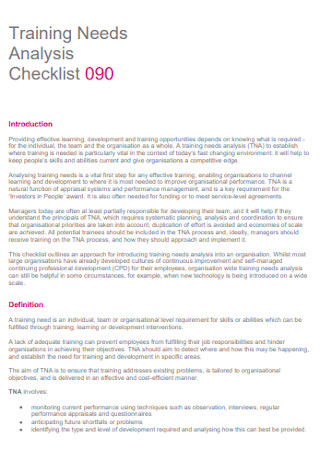
Training Needs Analysis Checklist
download now -

Training Preparation Checklist
download now -
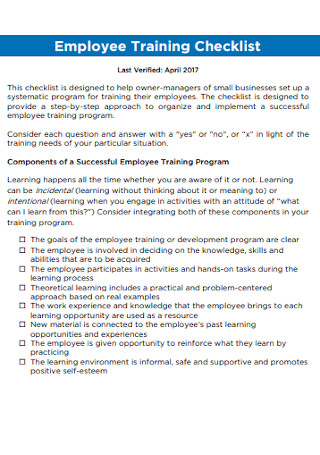
Employee Training Checklist
download now -
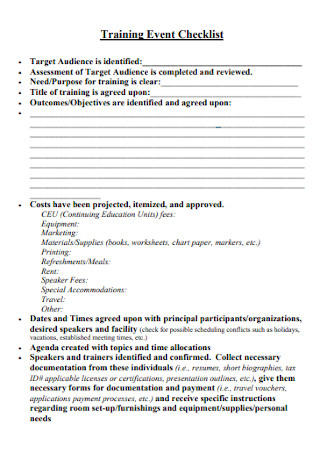
Restaurant Training Checklist
download now -

Training Plan Checklist
download now -

Training Program Checklist
download now -
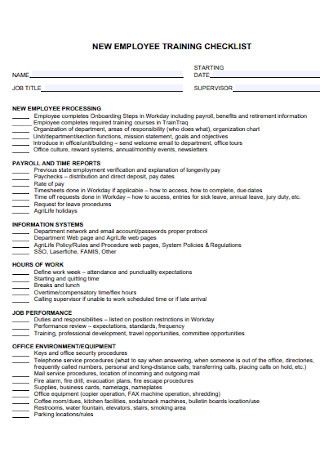
New Employee Training Checklist
download now -

New Staff Training Checklist
download now -
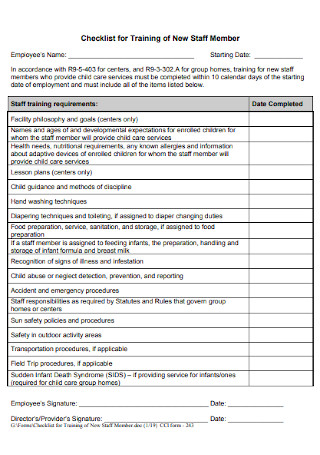
Manufacturing Training Checklist
download now -
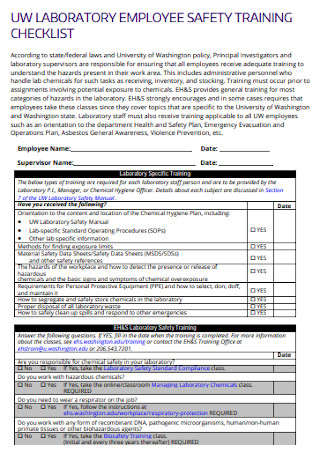
Warehouse Training Checklist
download now -
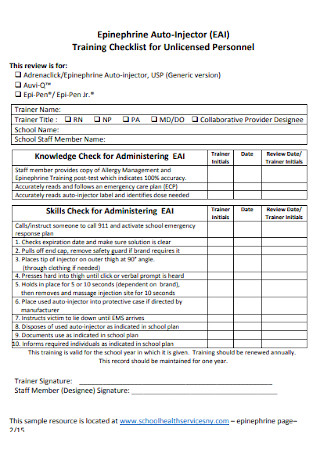
Administrative Assistant Training Checklist
download now -
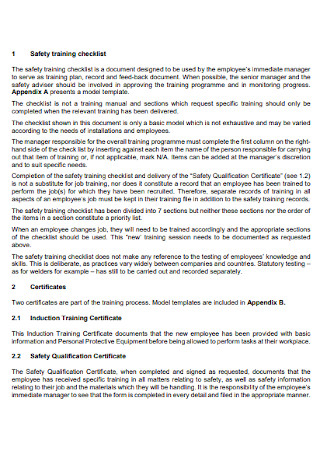
Kitchen Safety Training Checklist
download now -
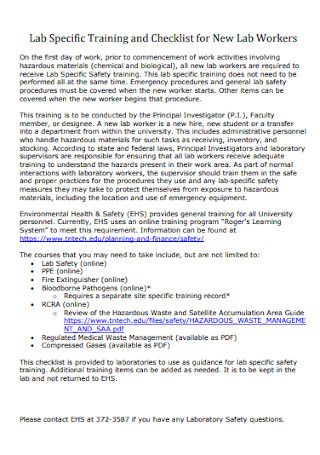
Housekeeping Training and Checklist
download now -
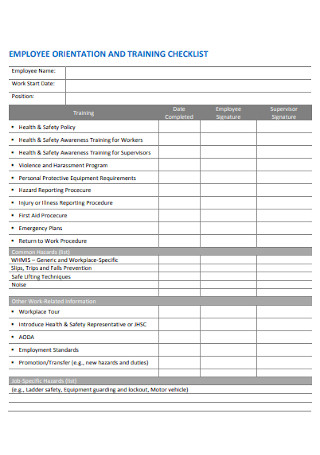
Employee Orientation and Training Checklist
download now -
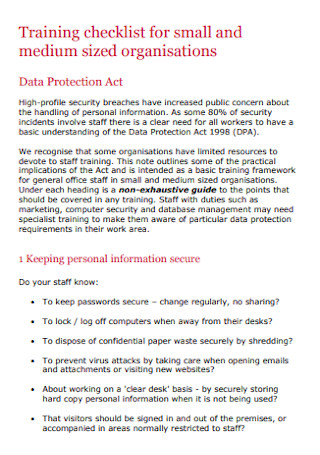
Induction Training Checklist
download now -
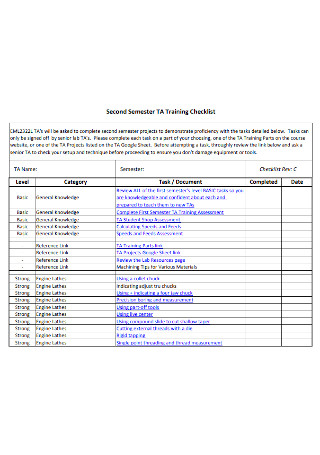
Equipment Training Checklist
download now -
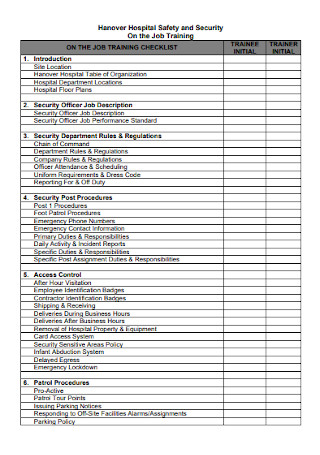
Job Training Checklist
download now -
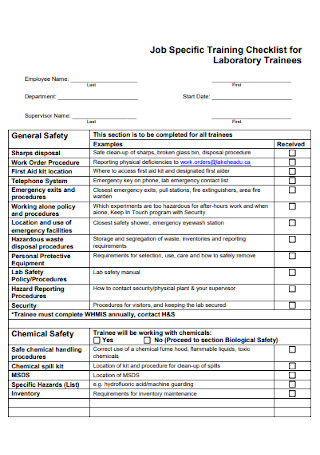
Receptionist Training Checklist
download now -
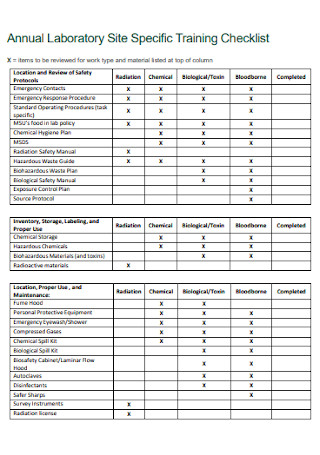
Training Checklist Form
download now -
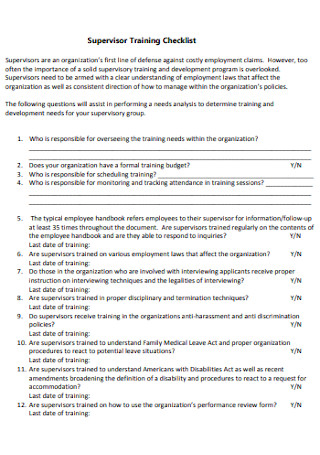
Supervisor Medical Training Checklist
download now -
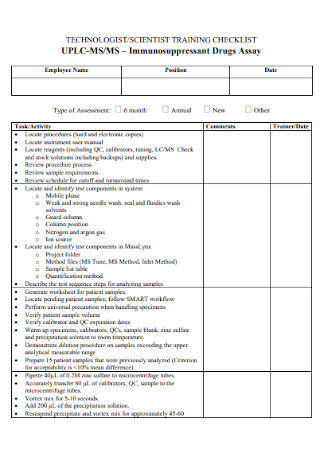
Scientist Personal Training Checklist
download now -

Test Security Manager Training Checklist
download now -
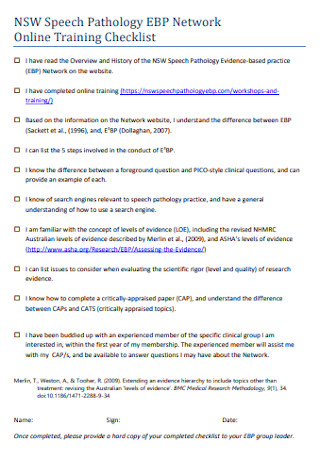
Network Online Training Checklist
download now -
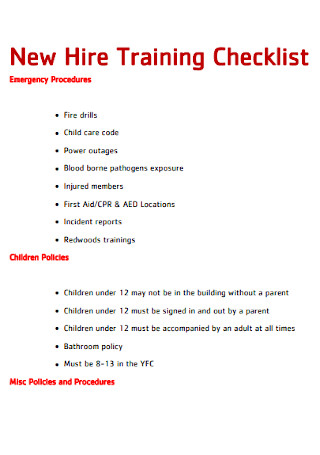
New Hire Training Checklist
download now -
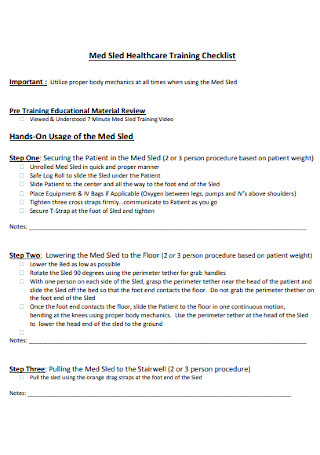
Evaluation Training Checklist
download now -

Training Checklist for Students
download now -
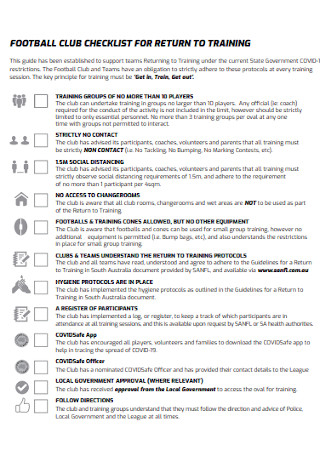
Football Training Checklist
download now -

Training Checklist and Declaration
download now -

Health and Safety Training Checklist
download now -
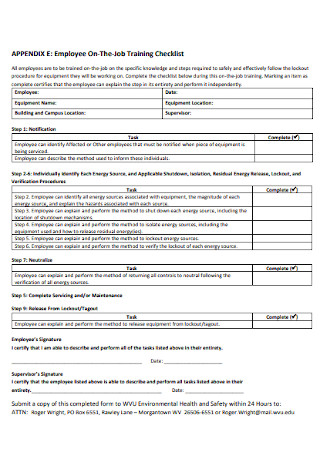
Employee On The Job Training Checklist
download now -

Tracker Orthodontist Training Checklist
download now -
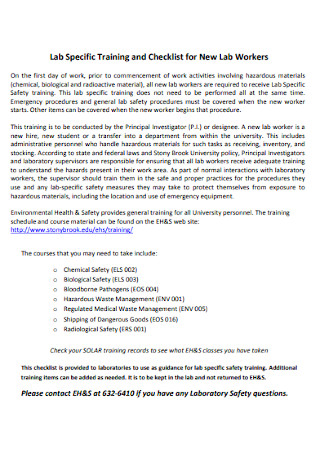
Sample Training and Checklist for New Lab Worker
download now -
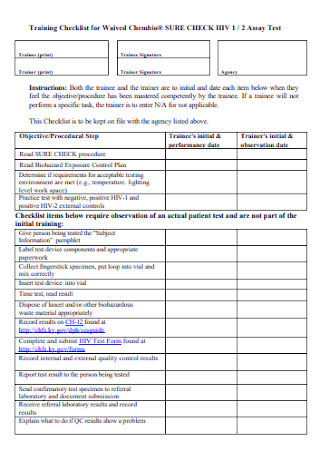
Training Checklist for Waived
download now -
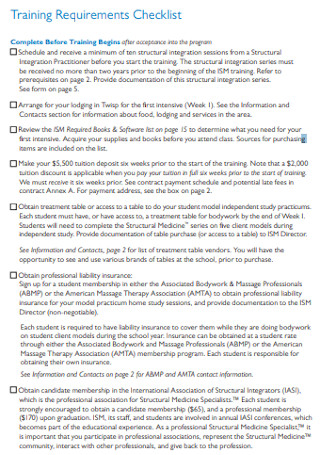
Training Requirements Checklist
download now -
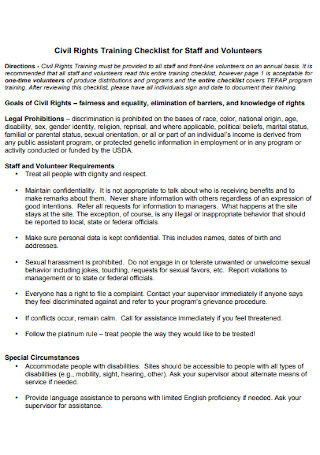
Training Checklist for Staff and Volunteers
download now -
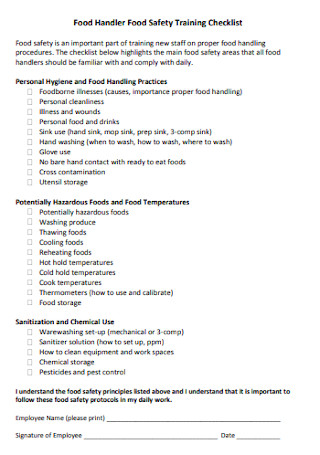
Food Safety Training Checklist
download now -

Training Materials Checklist
download now -
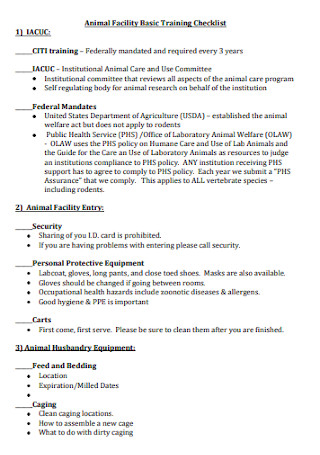
Basic Animal Facility Training Checklist
download now -
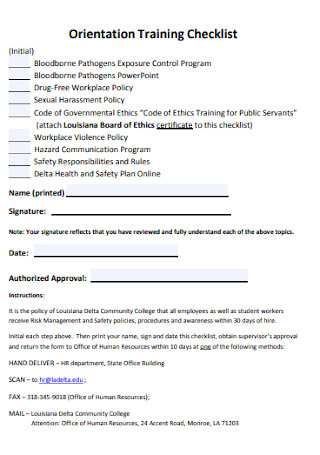
Orientation Training Checklist Example
download now -

Leader in Training Checklist
download now -
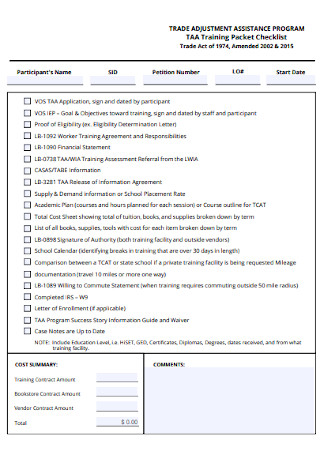
Training Packet Checklist
download now -
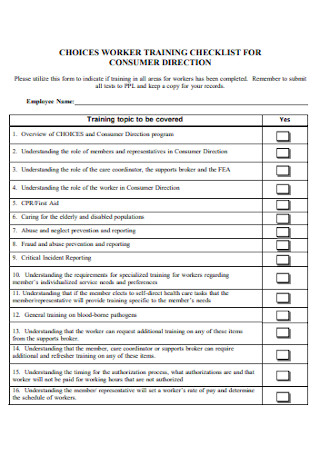
Worker Training Checklist Template
download now -
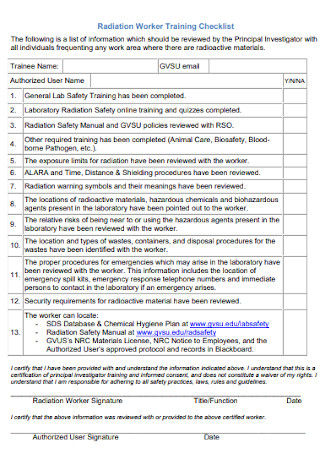
Radiation Worker Training Checklist
download now -

Product Training Checklist
download now -
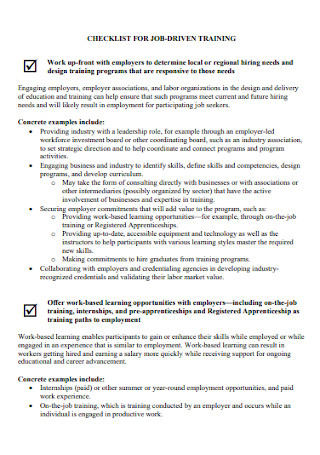
Checklist for Job Driven Training
download now -
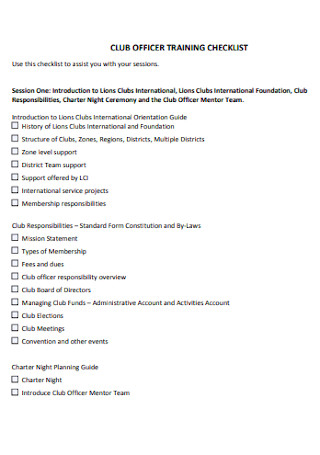
Club Officer Training Checklist
download now -
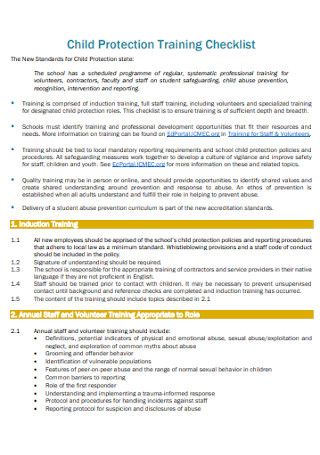
Child Protection Training Checklist
download now -
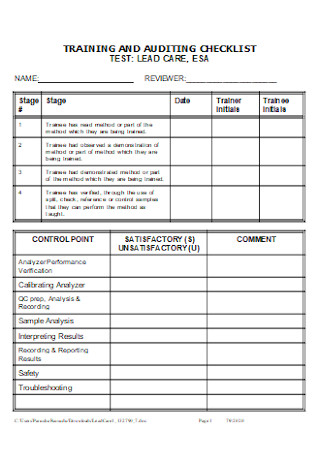
Training Auditing Checklist
download now
FREE Training Checklist s to Download
61+ Sample Training Checklists
What is a Training Checklist?
Components of a Training Checklist
How to Create a Training Checklist
Types of Training in the Workplace
FAQs
Why is a workplace training checklist important?
What types of training programs can a training checklist be used?
Can I use online training checklist templates for my training?
What is a Training Checklist?
Training plan is the process in which a company employs to introduce and orient new hires to the business or train existing employees for upskilling. The purpose of training is to acclimate the employees to the workplace and help in their retention over time. It also helps them assimilate themselves to the company culture and imbibe their individual roles and job functions by equipping them with the right skills and expertise. And in every staff training program, facilitators and trainers make sure to prepare a training checklist before each training starts.
A training checklist is often used before conducting a training program—a process that helps employees learn about the processes and policies and procedures of a company. A training checklist also helps ensure that during implementation, everything is in order and will run smoothly. By using this document, trainers will be confident that the training will enhance the relevant skills that employees need to perform their roles. An effective training checklist will help foster professional growth and development to improve work performance and productivity.
Regardless of the training is for an office administrative assistant or a kitchen or restaurant staff, having a training checklist will ensure that all preparations are done prior to the implementation of the training program. As part of the training document, a checklist helps in focusing on the needs of the trainees whether it’s for onboarding, brainstorming, or team-building.
Components of a Training Checklist
Many people believe that they have a good memory as if it hasn’t failed them before. But sometimes, they forget some of the things even the most mundane and common ones, such as the standard procedure of staff training, new hire orientation, or even the contents of a training program that they have conducted so many times in the past. This is why it isn’t uncommon to have a training checklist. Whether it’s for an on-the-job training checklist or a new supervisor checklist, trainers always have with them their handy trainer checklist.
Below are some of the most important that every training checklist must have:
How to Create a Training Checklist
A training checklist is intended to provide support to the trainer or the training team to prepare for the training phase. As several activities are involved in preparation for training, a training checklist form must be created. Follow these six easy steps to create an effective and comprehensive new hire checklist or employee training checklist.
Step 1. Assess Training Needs
Before creating your checklist, figure out if your company already has an established training document. You may use these documents as a reference guide to know what type of information and requirements that you need to include in your checklist. You may talk to the individuals involved in the training, especially human resources or the training staff.
Speaking to relevant people is especially important if there is no existing training document. You may also need to do further research about what the training involves so you can see what other skills and qualifications you need to include in your checklist. If you can find job postings from other companies, you may also use them as points of reference in creating your checklist.
Step 2. Determine the Training Design
The training design will be used during the training program. If it’s a new program, chances are there is no existing training checklist yet. Convening with trainers and program creators will help guide you in your preparation in creating the training checklist. It will also allow you to understand the training needs and requirements that should be included in your checklist.
Talk with the trainee or the trainer to assess what type of information that must be included on the checklist to ensure that gaps and issues will be avoided. It matters what type of training learners prefer—so make sure that you adjust your checklist based on how it was designed.
Step 3. Determine Different Roles
Knowing the tasks of the trainers, learners, facilitators, and the rest of the training staff, you will be able to determine which items should be prescribed. This will help set expectations and goals of each person’s role during the training.
This will help them get started with what they need to do and prepare for the necessary training materials that they are responsible for. Depending on your organization, some training programs are done face-to-face, while others are done online. If it’s the latter, make sure that you also prepare a virtual training checklist and delegate tasks based on each person’s role.
Step 4. Separate the checklist into sections
Once you have all the relevant information that you need, consider dividing them into different sections or categories for every stage of the training program. You may find that each section may require different things depending on the stage and people involved. To help you create this section, identify the smart goals of each stage of the training, the company objectives, and key takeaways you want the trainees to get from the training. Keeping in mind the goals of the training will surely make it easier to write down the things that are needed for the training and coming up with an effective training checklist.
Step 5. Create a checklist of pre-training items
Before anything else, you need to check with the trainers if there are any pre-training activities that the trainees need to do. This way, you can include in your checklist the preparation of any paperwork that needs to be accomplished or activities that need to be done before the training starts.
If there are any trainee information that needs to be collected or other data required by the company, accomplishing these before the training begins can prevent delays in starting the training. This will also give you more time to check if all pre-work items are complete and help ensure that they will run smoothly.
Step 6. Review the Training Checklist
Preparing for the training program days or months ahead will give you time to review the training checklist. This will ensure that you will be able to have your checklist assessed by the trainers and program coordinators.
Once they have evaluated your checklist, make necessary changes or revisions based on their comments and feedback. After that, you should distribute the document to all involved individuals so they can familiarize themselves with their roles and start preparing for their part of the training.
Types of Training in the Workplace
Companies and various organizations recognize the need for training and development. Different training programs being offered to the employees come with different costs and benefits. Three main types of training are usually done in the workplace to minimize the cost.
Induction Training
Typically offered to new employees upon joining the company, this type of training allows them to settle quickly into their new roles and be made aware of the important company policies and protocols. This also helps them know who the main personnel in the organization are. Usually, induction training includes a tour of the company premises, company policies, health and safety information, and introduction to colleagues, among others.
On-the-job Training
On-the-job Training, also known as OJT, is the type of training undertaken in the workplace to learn the ropes of the business process and the role of the employee. Different types of OJT are coaching, role play, job rotation, shadowing, and demonstration. OJT ensures that the skills and knowledge gained are specific to the company’s needs, and employees become more confident in their roles. This also involves minimal cost as in-trainings are often conducted for free.
Off-the-job Training
This type of training is usually done outside the workplace. With this type of training, employees can participate in different training programs in different locations like colleges (e.g. evening classes or distance learning), and off-work centers specifically designed for training. Most of the time, training off-site delivers high-quality output as these are usually conducted by experts, and participants can focus and concentrate on the learning material because of fewer work interruptions.
FAQs
Why is a workplace training checklist important?
When employees and organizations expand their knowledge and skills, it is important to have a document that outlines what needs to be prepared and done so they can do their jobs more effectively. This will ensure that nothing is missed out and every aspect of the training is completed.
What types of training programs can a training checklist be used?
Any type of training. A training checklist is most especially used for repetitive training such as onboarding new hire training, restaurant staff training, and other technical skills training.
Can I use online training checklist templates for my training?
Of course. There are many training checklists online that are available for free. You can browse through our website to find one that perfectly fits you and your training needs.
Training is an important aspect for any organization—that’s why many US companies invest in the training and development of their employees. With the help of a training checklist, management can ensure that their employees are receiving the right kind of training to reach overall organizational goals. To create one, you should know your training goals, programs, and talk to relevant people involved in the program so you can prepare a checklist that is comprehensive and effective. You can start from scratch or download from our wide selection of editable and printable training checklist templates.
